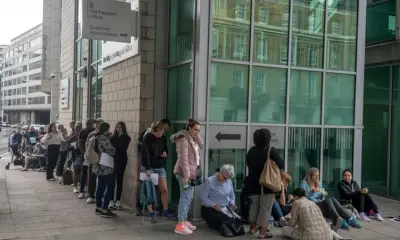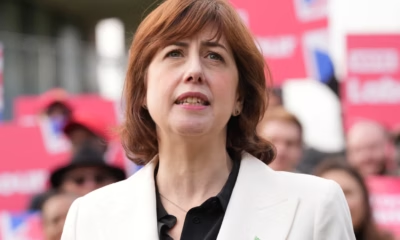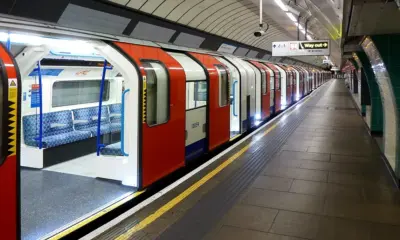Politics
London Public Transport Sees Record Ridership After Fare Adjustments

London’s public transport network has experienced a significant rise in passenger numbers following recent fare adjustments that aimed to balance affordability with revenue stability. Transport officials confirm that ridership has reached some of the highest levels recorded in the last several years, marking a notable shift in how residents and commuters are choosing to travel across the capital. This increase reflects a growing preference for reliable public transit options as well as renewed confidence in the city’s transport services after a period of uncertainty brought on by economic pressures and changing travel habits.
Fare Adjustments Encourage Commuters
The recent changes to fare structures have played a major role in encouraging more people to use buses, trains and underground services. By adjusting peak and off peak pricing, authorities have sought to make travel more accessible while still supporting operational costs. Many commuters who previously relied on private transport have shifted back to public systems because the updated fare model provides more predictable expenses. The introduction of simplified payment methods and wider acceptance of digital cards has also helped make transactions quicker and easier for passengers.
Increased Use of the Underground Network
The London Underground has seen one of the largest increases in ridership. Popular lines serving central districts and major commercial zones have reported consistent growth throughout weekdays. Officials attribute this rise to improved train frequencies, upgraded signalling systems and enhanced station facilities that have reduced delays and made journeys more comfortable. Commuters express greater satisfaction with the reliability of the network, and the smoother travel experience has helped rebuild trust among passengers who had previously expressed frustration with disruptions.
Bus Services Gain Strong Momentum
Bus services have also benefited from the fare adjustments. Ridership has increased across outer boroughs where buses serve as primary transport links. Many passengers appreciate the affordability of bus travel combined with improved scheduling and clearer route information. Transport planners have expanded dedicated bus lanes in several districts, helping reduce travel times and provide a more dependable alternative to private cars. Some routes have seen significant jumps in daily usage, demonstrating the importance of accessible surface transport for communities spread across the capital.
Commuter Behaviour Shifts
The shift in ridership trends is closely connected to changes in work patterns and lifestyle choices. While remote work remains common in many industries, more people are returning to hybrid schedules that require travel several days a week. This has created a new rhythm of weekday travel that differs from pre pandemic patterns. Weekend ridership has also surged as residents take advantage of cultural events, entertainment venues and shopping districts. These changing habits have encouraged transport authorities to adjust timetables and increase services during high interest periods.
Economic Impact on Local Businesses
Increased transport usage has contributed positively to local businesses, especially those located near major stations and busy transit routes. Retail stores, cafes and entertainment venues report stronger foot traffic as more people move through commercial districts. Business groups highlight that accessible public transport plays a key role in supporting economic activity across London. Many employers also rely on the city’s transport system to attract workers from different boroughs, making improved ridership an important indicator of economic recovery.
Government Role in Transport Planning
Government officials have emphasized the importance of long term transport planning to support London’s growing population and evolving travel demands. Policies surrounding fare adjustments, infrastructure investment and accessibility improvements are shaped through continuous consultation between local authorities and national decision makers. The latest ridership increase is being viewed as a sign that recent transport policies are moving in a positive direction. Officials stress that sustained commitment is essential to ensure that the transport network remains efficient, safe and financially sustainable.
Environmental Benefits from Higher Ridership
Higher use of public transport has helped reduce traffic congestion and lower emissions across the city. Environmental groups welcome the rise in ridership, noting that fewer private vehicles on the road contribute to cleaner air and reduced noise pollution. Many individuals have shifted to public transport not only for affordability but also because of increased awareness of environmental responsibility. Authorities are continuing efforts to promote greener travel options including electric buses and expanded cycle friendly routes that complement public transport systems.
Role of Technology in Enhancing Services
Technology continues to improve the travel experience for passengers. Real time tracking apps, digital payment systems and updated travel alerts provide commuters with the information they need to plan efficiently. These digital enhancements have made journeys smoother and reduced uncertainty during peak hours. Transport operators also rely on data analytics to monitor passenger flow and identify areas requiring additional support. The integration of technology into daily travel reflects London’s commitment to maintaining a modern and responsive transport network.
Passenger Satisfaction Moves Upward
Surveys conducted across the network show an increase in passenger satisfaction. Many highlight cleaner stations, better signage and improved safety measures as key factors influencing their positive experience. The availability of helpful staff and rapid response teams has also contributed to smoother travel. While challenges still exist, especially during rush hour, the overall sentiment among passengers reflects growing confidence in the city’s public transport system. Authorities are optimistic that strengthened satisfaction will support further improvements in the coming months.




















